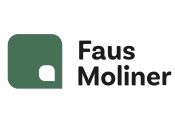There is no need to panic: the burden of proof of the defect, the damage and the causal relationship continues to be for the plaintiff
Judgement of the contentious-administrative Chamber of the National High Court of 17 May 2017
CAPSULAS Nº 184
Background
In our previous Capsulas we commented the judgement of the Court of Justice of the European Union of 21 of June and we warned about the uncertainty generated by the judgement as it included the possibility that a judge might consider that a vaccine is defective and that there is a causal link between the defect and the disease based on firm, specific and consistent evidence.
However, we added that such evidence regime could not reverse the burden of proof and that the Directive precludes rules based on presumptions that lead to consider the causal relationship proved, in any case, if certain evidence is presented.
Judgement of the National High Court
The judgement issued by the National High Court (AN) that we are now commenting also resolves a case of liability for damage caused by the administration of a vaccine, which is addressed against the Ministry of Health, Social Services and Equality (MOH) and against the pharmaceutical company that had marketed the product
The judgement of the AN confirms that the burden of proving the defect, the damage and the causal relationship lies with the claimant and, in the absence of evidence from the claimant, it absolves the MOH and the pharmaceutical company of all the wrongdoings attributed to them.
The AN rejects the complaint on the basis that the burden to prove that the competent authorities, based on the state of scientific knowledge, did not act according to the scientific data and evidence available at that moment lies with the claimant. The claimant did not provide any firm and scientific evidence which would lead to the conclusion that such risk-benefit balance was unfavourable and that, therefore, the vaccine should not have been authorised.
The AN rejects the evidence proposed by the claimant consisting of opinions which, the Court states, do not undermine the studies and clinical trials that endorsed the efficacy of the product.
With respect to the alleged lack of informed consent prior to its administration, the AN rejects the complaint because the claimant has not demonstrated that the hypereosinophilic syndrome (eosinophilia) he was diagnosed with was a frequent adverse reaction, and therefore the obligation to inform did not include such risk since it was not known.
Moreover, the AN considers that the causal relationship between the diagnosed disease and the vaccine has not been demonstrated, since the medical history does not associate the ailments and symptoms from which the claimant suffered with the vaccine.
The liability of the pharmaceutical company for defect of information in the Summary of Product Characteristics and the leaflet is also rejected because the claimant has not proved that his disease was caused by the vaccine.
